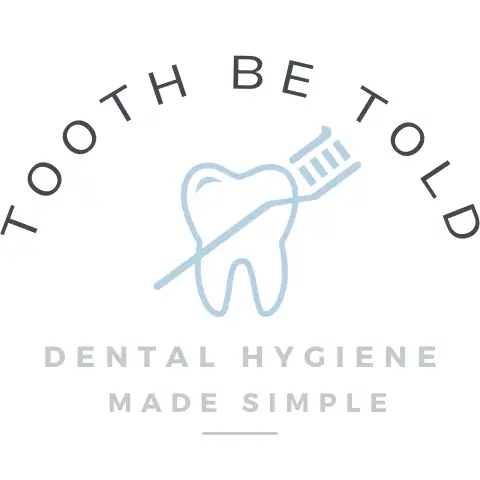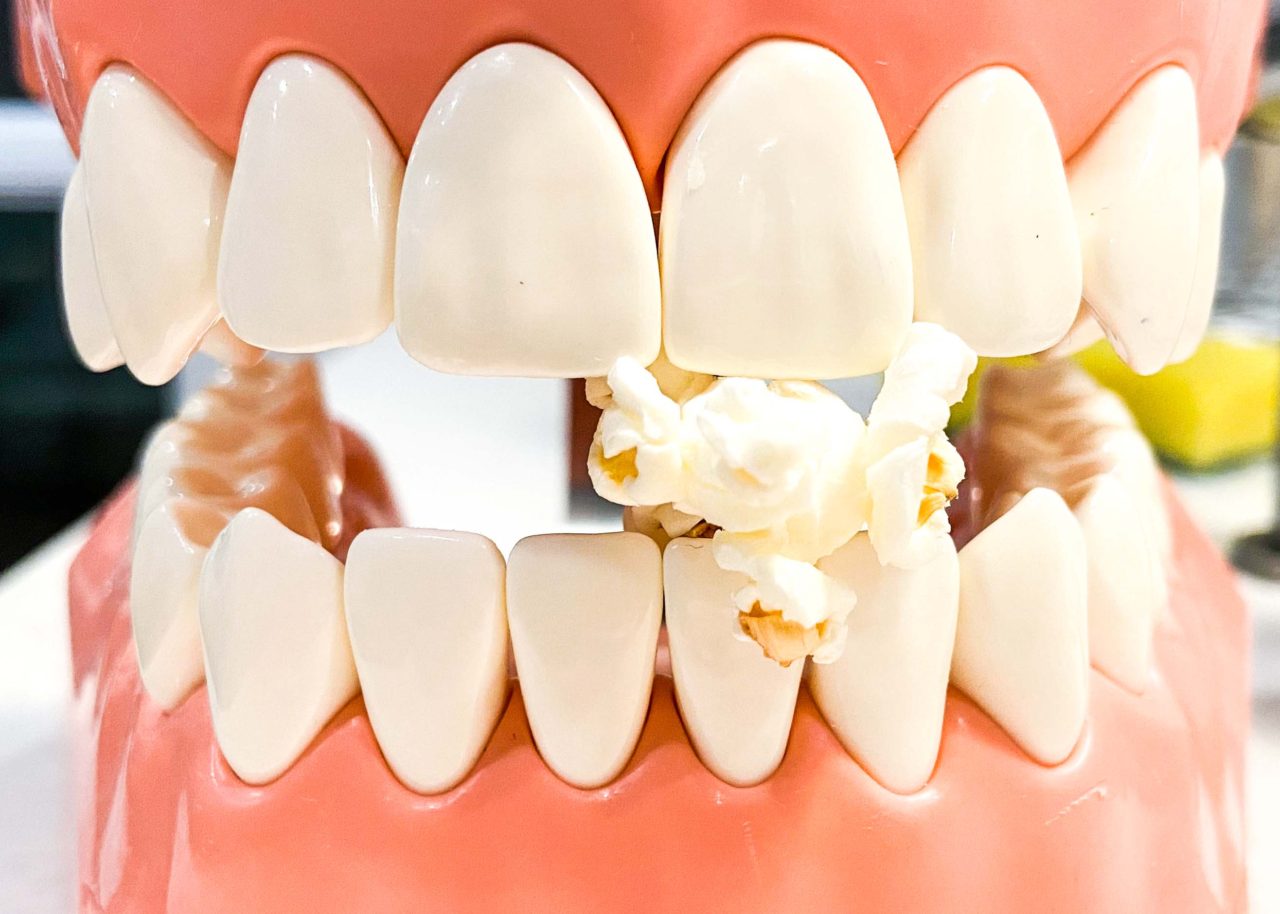
As a dental hygienist, I often find popcorn kernel hulls/pieces underneath the gumline of my patients, and once I have found one, I make sure to educate my patients will all the info I’ve listed below. I take the time to explain to my patients that severe health concerns can be associated with popcorn getting stuck under the gums.
The best way to remove popcorn from under the gums and between the teeth is to floss using the C-shape technique and progress to using floss with a knot, interdental/proxa brush, Waterpik, Sulca brush/end tuft brush if flossing does not work. See a dental professional if popcorn does not come out.
Below I list out and explain ten ways, including videos, to remove the popcorn kernel from your gums (more things to do than I have listed above), and I also dive into what can happen if you can’t get it out and what to do!
*IMPORTANT*
Please, if the popcorn kernel is not coming out easily after following these tips, please don’t be rough or put a lot of pressure on the gums. The popcorn kernel can be pushed further underneath the gum line and you can be at more risk of infection. Always use clean dental hygiene tools to not introduce bad bacteria to the mouth.
Read Now: Can a Popcorn Kernel Cause an Abscess? Hygienist Explains
1. Use rope floss with a C-shape technique to remove popcorn
Popcorn kernel hulls are the perfect size and shape to slip between our gums and teeth. Often we may not even realize that we have popcorn stuck between our gums and teeth until a few days later when the gums become sore.
The hull of the popcorn kernel is slightly concave, which allows it to suction itself to the tooth/gums underneath the gum line, making it very difficult to remove.
Dental floss should be your first go-to to get the popcorn kernel out from under the gum line. I suggest using rope floss (not flat/tape floss such as Glide by Oral-B) because rope floss has more grip to increase the chance of getting the popcorn kernel out.
Below you can see a photo of the type of floss I recommend. All those tiny filaments will hopefully grab that stubborn piece of popcorn!!
Read Now: Hygienists Guide: Eating Popcorn After Wisdom Teeth Removal
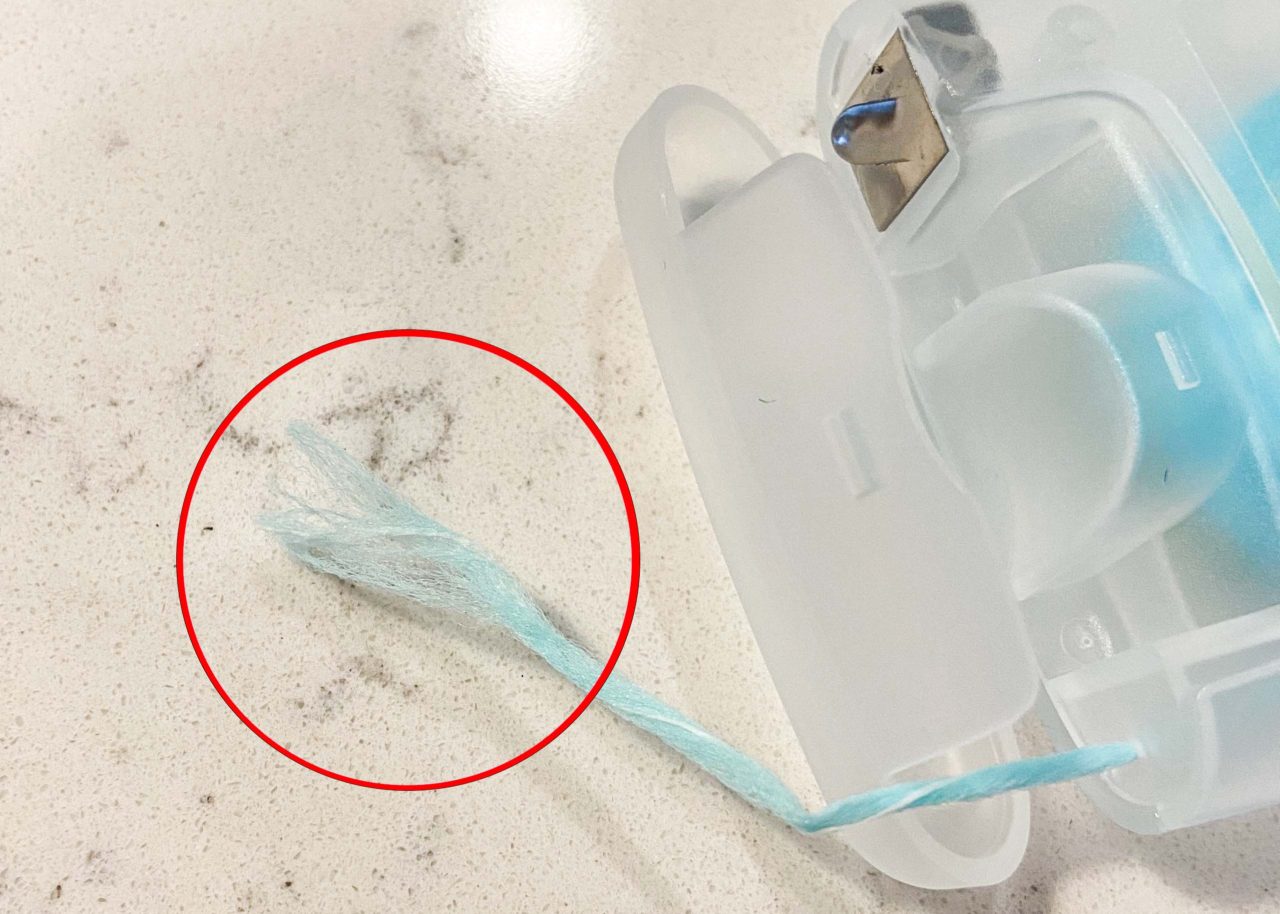
You will want to be very precise with your flossing technique by using the “C-shape technique.” When the floss goes under the gum line, you will want to push it to one side of the tooth, wrapping the tooth like the letter “C.” By doing this, you will cover more surface area of the teeth.
Read Now: Do Popcorn Hulls Dissolve Under the Gums? Hygienist Explains
Be very gentle under the gums, as you don’t want to push the popcorn deeper under the gums. With slow, gentle motions, slowly move the floss up and down along the tooth (but not too far under the gums to push the piece of popcorn further under the gum line).
My favourite rope floss is COCOFLOSS (especially because they come in so many delicious flavours). Below are pictures of how to use floss to remove popcorn. Amazon link for COCOFLOSS! I get it shipped to Canada because I love it that much!
I get it shipped to Canada because I love it that much!
2. Use rope floss with a knot to remove popcorn
Take the floss, make a single knot and pull tight, so the knot shrinks in size. You don’t want the knot to be too big because it can damage the gum tissue. I made an example of the knot you will want to tie below. 🙂
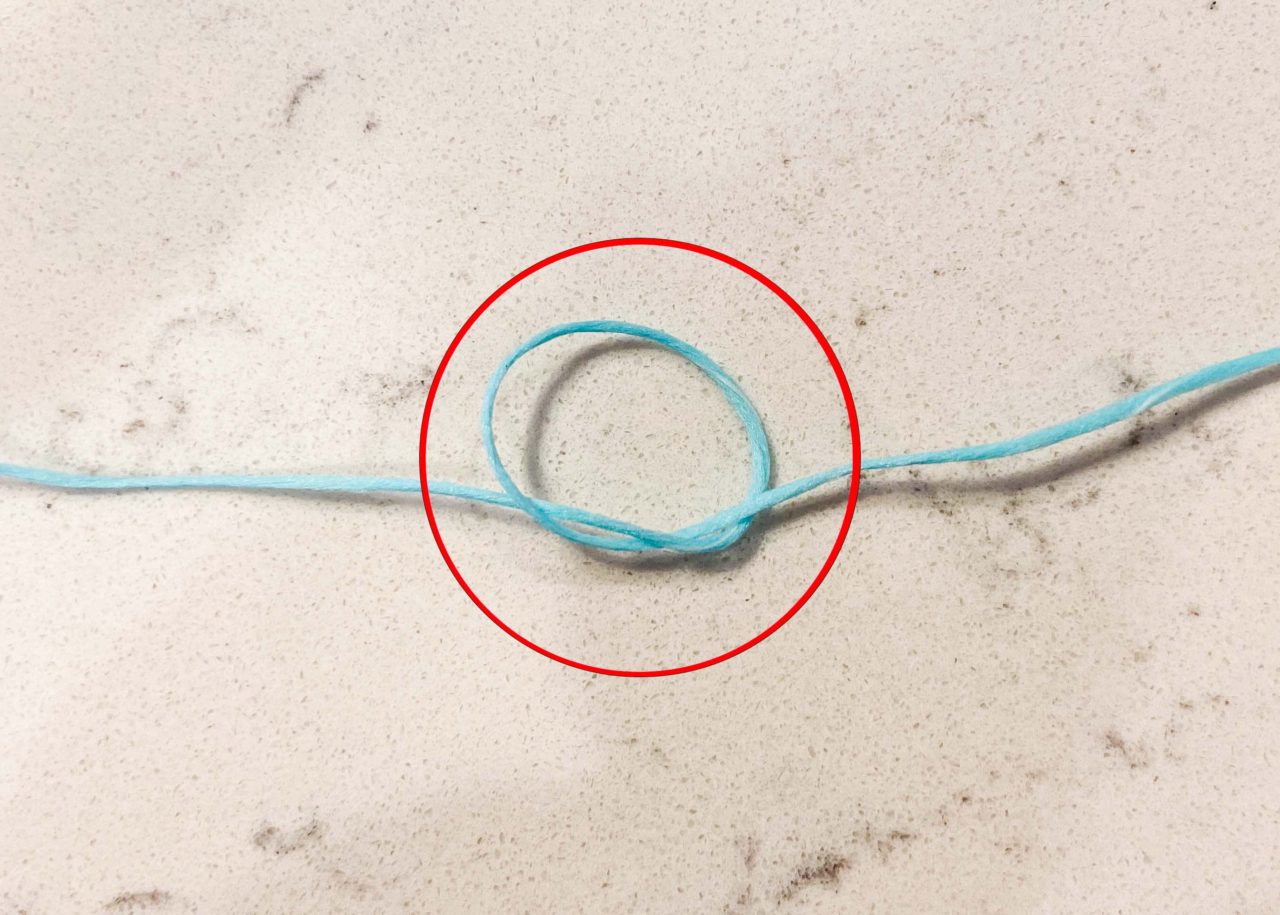
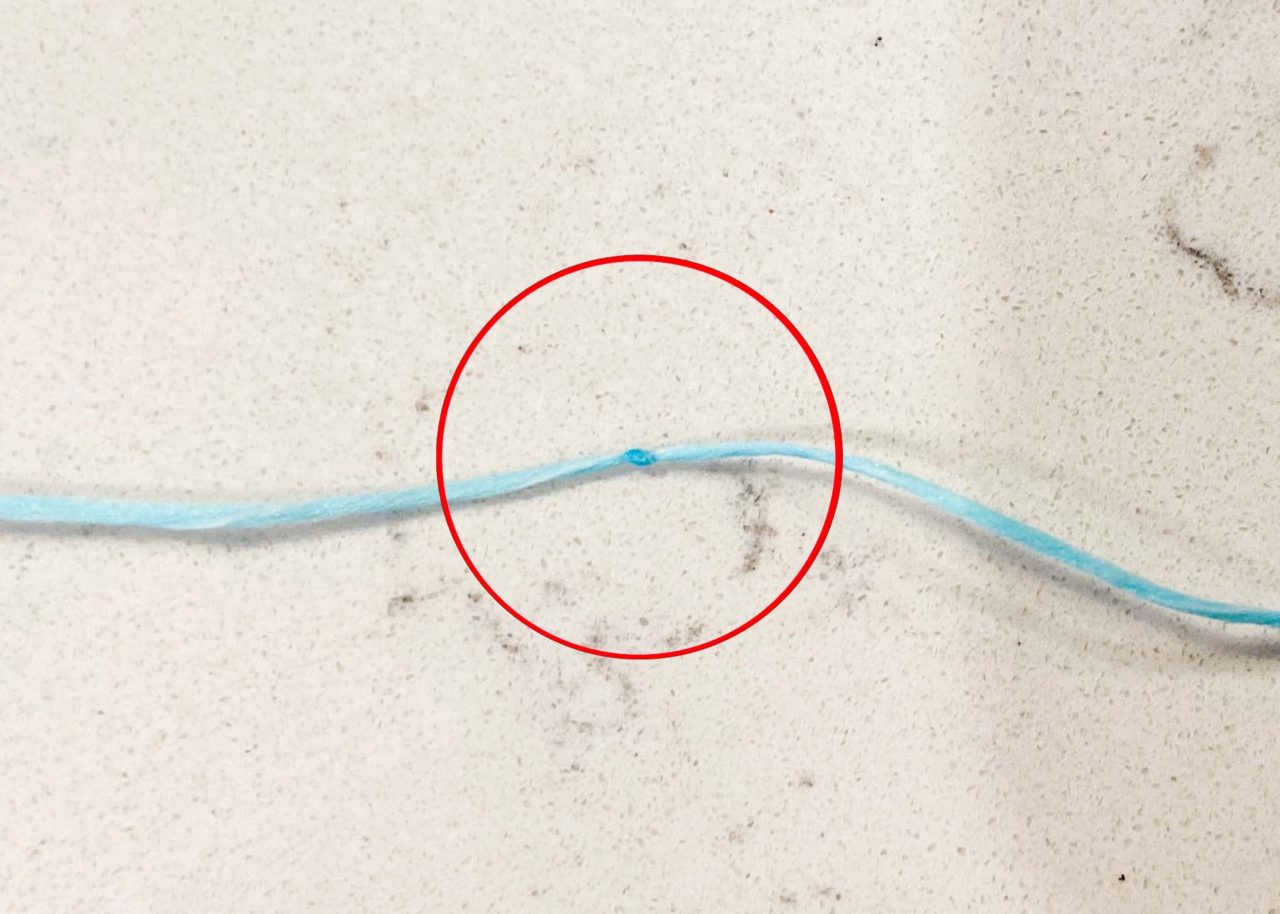
Just like you would when flossing regularly, you want to be gentle when inserting the floss between the teeth. To make things easier, make sure that the knot in the floss is on the palate/tongue side of the teeth. This will make it easier for the knot to pull through the teeth when sliding the floss out.
You want to keep the “C-shape technique,” but instead of moving up and down on the tooth, you will want to pull the floss straight out the side in a horizontal line. Hopefully, the knot will help push the popcorn kernel out from under the gums!
I made a video below to show you, as this can be tricky!
3. Use an Interdental/Proxa brush to push out kernel
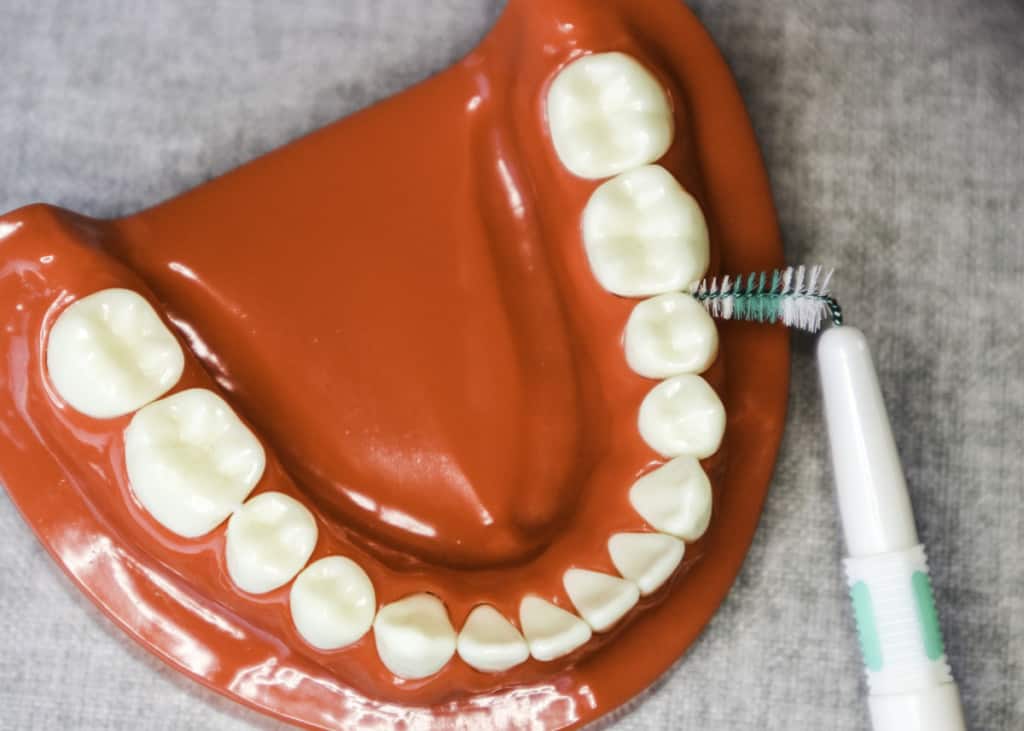
I LOVE interdental/Proxabrush brushes. They are so user-friendly and have so many benefits to oral healthcare. And now they make them in all shapes and sizes to fit everyone’s unique mouth.
Sometimes floss can be tricky to maneuver, and because our teeth have concavities and indentations, the floss may not reach those areas.
Warm up the bristles under warm water to soften them so they can bend and contour around the teeth more easily. You will want to insert the brush in between the teeth. If it is too big, don’t force it through as it could cause damage to the gums. You want it to push the brush in and out between the teeth to brush out the popcorn.
Check the brush after a few strokes to see if you have got that stubborn popcorn out.
4. Use Waterpik on low to flush out popcorn kernel
Waterpiks are so underrated. They do not replace flossing but have so many benefits that floss does not have. The water can be gentle but effective in dislodging the popcorn.
You can use any tip/attachment, but the best one to use is the pikpocket tip. It has a rubber end that better gets underneath the gum line and cleans more surface area. Use it on a low setting to prevent pushing the kernel farther between the gum and the tooth.
5. Sulca brush/end tuft brush
Sulcabrushes are smaller and more pointed than end tufted brushes, so they can be more effective at removing plaque and food debris from the gum line and a couple of millimetres under the gum line.
Sulcabrushes are fantastic for areas with no adjacent tooth (where two teeth meet together) and great for reaching farther back in the mouth near the molars.
The gum tissue comes up higher on the last teeth, including the wisdom teeth, because of the natural curvature of the jaw. The curvature of the jaw and higher gums can contribute to food getting caught and lodged between the gums and the teeth.
6. Use an electric toothbrush gently along the gum line
Using an electric toothbrush correctly is so important to prevent toothbrush abrasion of the gum tissue and the tooth structure. I often go over this with my patients because so many people are unaware of the proper technique (I know I wasn’t until I went into dental hygiene school)!
You will want to place the bristles at a 45-degree angle along the gum line so the bristles cover half the gums and half the tooth.
Make sure you change your brush head every three months because it is 90% less effective at the 3-month mark than when you first put it on! A new brush head’s bristles will be at the proper angle for them to bend and contour under the gum line, reaching further to hopefully get that popcorn out!
Read Now: Hygienist Compares: Sonicare vs. Oral-B Electric Toothbrushes
The vibrations/oscillations of an electric toothbrush can loosen the popcorn under the gums because sometimes it can be suctioned to the side of the tooth, making removal very difficult!
7. Use Monoject syringe pointed at 45º angle
Monoject syringes are so great that we have a whole box of them at the dental office I work at to give to patients if they need one. If you have one at home, that’s great, but if you don’t, I would call your dental office and see if they can give you one for free.

When you call your dental office, book an appointment as soon as you can to be seen in person, but ask for a monoject syringe if you will be waiting more than a day for your appointment. You can buy them online on Amazon, but honestly, I don’t think it is worth it. Just wait to see your dental professional.
You will want to either use warm water or salt water within the syringe.
8. Chew gum with xylitol to dislodge popcorn
Chewing gum gets your salivary glands working to produce more saliva. This saliva influx can help rinse and dislodge the popcorn kernel. Chew gum that contains xylitol. It will help prevent cavities and stimulate the saliva very effectively!
I always recommend xylitol gum to my patients as an aid to help with salivary issues and when patients are prone to tooth decay! Because xylitol helps stimulate salivary glands and inhibits cavity-causing bacteria, it is the best gum to use!
PUR 100% Xylitol gum is my favourite and what I carry around with me in my purse! Amazon link here! 🙂
🙂
9. Swish/rinse with warm salt water for 30 seconds
Salt water is a fantastic way to cleanse our gum tissue that isn’t as harsh as a mouthwash. You can use just warm water if you have a salt-restricted diet.
Salt water in the right concentration causes the bacteria to die because it pulls the water from the bacteria cell. Salt water rinses help with inflammation and promote healing of the gum tissue.
To get the right concentration of salt water to use as a rinse, I have the recipe here that I wrote up! 🙂
🙂
10. Book an appointment with your dental professional
Never leave a popcorn kernel stuck in your gums, as it can cause serious, life-impacting issues.
It can potentially cause an abscess. If it gets large enough, it can cross the blood-brain barrier, or the bacteria accumulating around the kernel can enter your bloodstream and cause infective endocarditis.
There is a link to a news article about a man who got popcorn stuck underneath the gums. He got an infection that led to bacteria entering his bloodstream, infecting his heart and nearly losing his life! That is why regular dental hygiene is so important!
about a man who got popcorn stuck underneath the gums. He got an infection that led to bacteria entering his bloodstream, infecting his heart and nearly losing his life! That is why regular dental hygiene is so important!
Either have your dentist or your dental hygienist take a look for you. I have had patients before who have gotten popcorn kernels stuck, and they didn’t want to try and get it out at home in fear of pushing it up farther that they can’t reach it.
I really hope that if you go to the dentist and they take less than one minute to take out the kernel, they don’t charge you for the appointment.
Read Now: How Dental Hygienists Clean Teeth! What You Need to Know!
Can popcorn cause an abscess?
Popcorn can cause a gingival abscess. When popcorn gets stuck underneath the gum line and is not removed, the body starts the inflammatory process to remove the popcorn. Popcorn kernels do not dissolve, so the body is in a chronic state of inflammation, potentially leading to a gingival abscess.
Please see your dental professional if you notice an area that is quite inflamed, with red, smooth bulbous tissue and bleeds easily. If you have an abscess, it can get quite serious, potentially causing hospitalization and, very rarely, death.
I wrote a post all about abscesses caused by popcorn, including periapical abscesses that I didn’t touch on in this post. It is linked below.
Read Now: Can a Popcorn Kernel Cause an Abscess? Hygienist Explains
Can food stuck in gums cause gum pain?
Food that becomes stuck under the gumline can cause pain and pressure. The best way to prevent pain in the gums from food is to maintain a consistent oral hygiene routine of brushing and flossing to remove food and to see a dental professional for hygiene appointments at least every six months.
Imagine having a splinter of wood in your hand. The area affected can become painful and inflamed if the splinter isn’t removed. It is the same with our gums. If something is trapped below the gum line, it will cause localized inflammation that can be acute and cause pain.
If you are experiencing gum pain, you should book an appointment with your dental professional. Even though it could be something like a piece of popcorn kernel stuck, it could be due to something else, such as an abscess or cavity.
I will ask my patients when the last time they ate popcorn was and politely educate them on the dangers of popcorn kernels under the gum line and, if they eat popcorn, to be very diligent with their home oral hygiene care over the days following eating popcorn.
I never want to come across as trying to make them feel bad (heck, I can eat a whole bag of sweet and salty popcorn to myself!)! My goal is to educate people on some of the dangers of potential issues, which I hope I have helped you with today 🙂
Have a great day!
Holly 🙂
